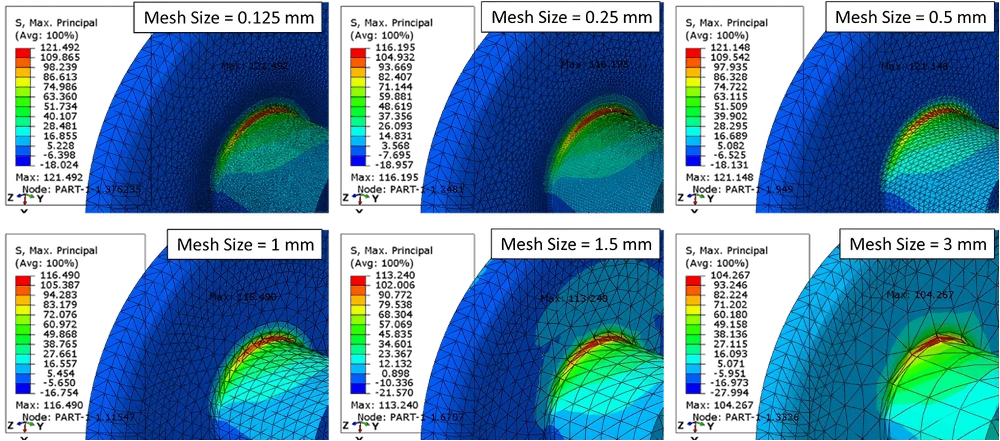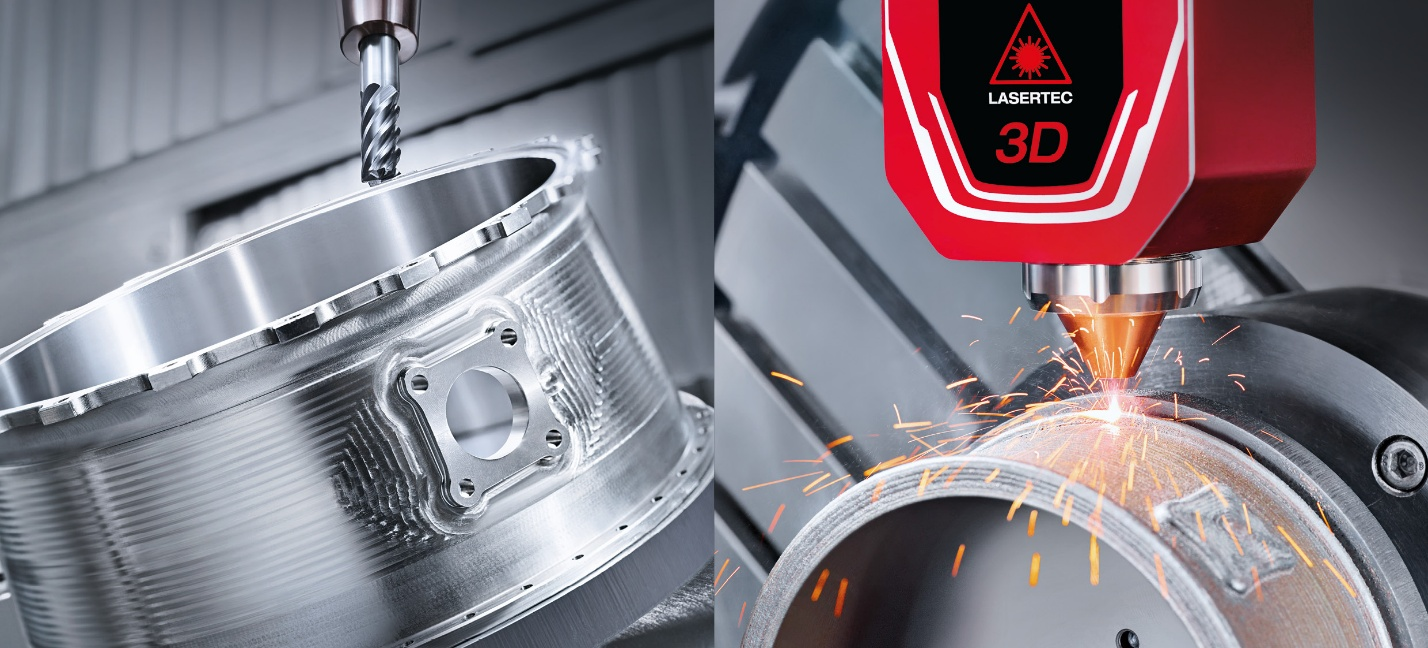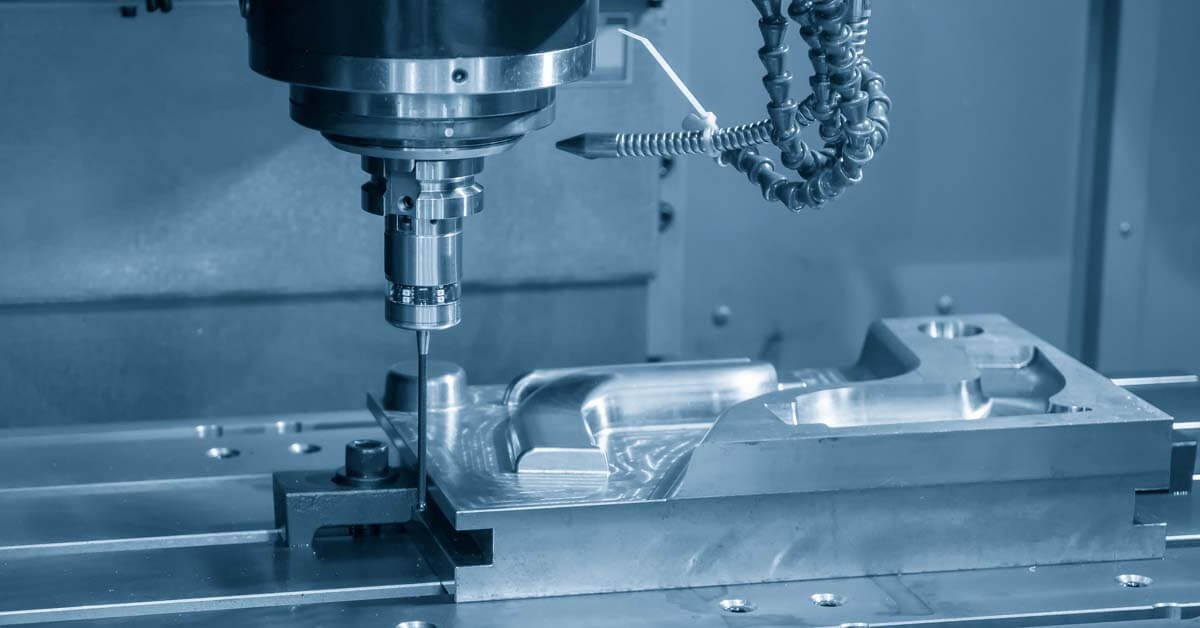General design tips
Try to avoid thin walls: This is an aspect ratio guidance, rather than a specific thickness limitation. As a rule, upstanding wall heights should not exceed 3 times their general thickness.

Thin walls are often required but they represent difficulties in machining;
- They are likely to vibrate during cutting, increasing chatter finish
- They are likely to deflect away from the cutter, requiring more and thinner cuts to maintain dimensional accuracy
- Where they support other elements of a design, those elements are increasingly liable to error and quality issues
The standard minimum thickness for walls is 0.8mm as a general guide for metals and 1.5 mm for plastics. However, these are not hard and fast limits - where a wall is supported on more sides, general thickness can safely be reduced.

Where thin and poorly supported walls are design necessities, consider replacing the machined part with a cut or 2D machined sheet component.
Avoid features that are impossible to CNC machine
Not every feature lends itself to being CNC machined. Understanding machine capabilities, cutter types and component clamping setups can prevent the inclusion of features that cannot be programmed/cut.
A good example of a feature which a CNC process cannot reproduce is internal curved galleries. Where such features are imperative or unavoidable, you can consider splitting the part to make the gallery in two halves, or metal 3D printing part or all of the component to allow otherwise impossible features.
Avoid overly tight tolerances
General tolerancing to suit the machine process being designed for allows the fastest processing. Where tighter tolerances are required, these should be carefully considered and opened up to the limit of the design.
Tight tolerances increase cutter consumption and machining time, be requiring more and finer cuts and closer inspection. There will also be an increased scrap rate from over tolerancing and these factors can increase costs significantly.
Reduce features to the essentials
Reducing curvature may result in unacceptable aesthetics, but if cost is a bigger driver then simplicity is the way to restrain this, as this will reduce cutter time. Aesthetic features can also force the use of 5 axis machining, increasing the cost of both programming and machine time.
As a rule, it is advisable to minimise text, lettering and engraving on machined parts - these features should be included where necessary but they represent a cost up in tool changes and reduced speed cutting.
Embossed texts should be avoided, substituting ‘debossed’ text as it requires less material removal and fewer operations. Use non serif fonts and consider other engraving processes if font size of less than 20pt is required, as this requires unusually small tools.

Consider the depth-to-width relationship in cavities
Cavities deeper than six tool diameters are becoming excessively deep. Aim for a 4 x cutter diameter limit as a rule.
Deep hole features increase the risk of tools hanging up, reduce accuracy by allowing excess tool deflection, increase the difficulties in clearing cuttings and greatly increase the risk of cutter breakage.
Blunt tool-axis internal edges with a radius
Cutting tools are cylindrical, so edges that are not perpendicular to the tool axis cannot be ‘sharp’, though some can be, by means of considerable additional processes. To reduce tool wear/stress, a good guide is to use internal filets whose radius is at least 1.2 times the expected cutter radius.

It is not advisable to use smaller tools to achieve smaller internal corner radii/filets unless it's imperative. One technique to avoid this is to apply a small undercut in problem areas, to the virtual internal corner is square.
Avoid excessive tapping depth
Tapping of more than 3 x the hole diameter is generally not beneficial in strength terms and should be avoided. This reduces the risk of tap breakages which have expensive consequences. Where holes are tapped blind, it is beneficial to leave an untapped length of hole to avoid bottoming out, either on the hole or the entrapped cuttings. Bottoming a tap is a geat way to break it off.
Reduce small internal features
As a rule, cutters smaller than 2.5mm are not advisable, rendering internal features of this size or smaller impossible. External features can, however, be snaller than the cutter in some aspects - but remember that small cutters require shallow cuts and increase machining time considerably.
Try to use standard sizes for holes
Where possible, stick to whole millimetre steps in drill sizes and aim to limit the number of different hole sizes on a component. This avoids the need for specialist drills/cutters (which are often custom made) and reduces the need for tool movements perpendicular to the cutter, which slow the process.
.
Specific Design Advisories
General Tolerances
In designing your parts, remember that edges will be deburred by default - so if you want them sharp, specify this on a drawing.
Assume general tolerances as below:
| Feature size | General linear tolerance (metal) | General linear tolerance (plastics) | General angular tolerance (all materials) |
| 0-300mm | +/-0.1mm | +/-0.2mm | +/-0.5 degree |
| 300-600mm | +/-0.2mm | +/-0.3mm | +/-1.0 degree |
| 600-900mm | +/-0.3mm | +/-0.6mm | +/-1.0 degree |
| 900-1500mm | +/-0.6mm | +/-1.0mm | +/-1.0 degree |
You should specify tolerances on individual features and measurements as the design requires. Be aware that tighter tolerancing requires slower processing and potentially additional toolchanges and higher scrap rates.
In particular, hole basis and shaft basis tolerancing are critical to functioning of moving parts, so these should be specified as below.
| Category | Description and Usage | Hole Basis | Shaft Basis |
| Loose | Generous clearance where accuracy is not essential | H11/c11 | C11/h11 |
| Free running | Moderate clearance where accuracy is not essential | H9/d9 | D9/h9 |
| Close running | Small clearances and higher accuracy requirements | H8/f7 | F8/h7 |
| Sliding | Minimal clearances and accuracy requirements | H7/g6 | G7/h6 |
| Location | Very close fit and precise accuracy requirements | H7/h6 | H7/h6 |
Note that close tolerances are much harder to hold in plastics machining because the materials are flexible, unless the plastic in question is very rigid - Tufnol/Garolite is a plastic that does allow close tolerancing. There is also a tendency for internal stresses in plastic blanks to be released by machining, leading to gross distortion/inaccuracy of parts.
Material Choices
The BLANK, or material blank is the stock material piece from which a part will be cut. It is a good policy to consider the blank sizes available from a supplier when designing for multiple part CNC manufacture, to minimise waste. The cost of materials for a part or parts is a result of the BLANK cost, not the remaining material weight/volume.
It is good policy to leave margin in the machining, so that outer blank faces are all machined away, rather than relying on precise cut and outer face matchup.
Blank choice must also take into account clamping methods, to allow for the minimum number of setup changes in the net manufacturing process.
Choosing materials is primarily a design consideration, but factors such as ease of machining may influence choice. Using a harder, or less free cutting grade of material to comply with available stockof blanks, for example, will have significant negative impact on machining time, surface finish and cost.
Plastics and free cutting metals like aluminium and brass machine easily and this lowers machine time and therefore cost. Hard materials such as tool steels and those which work harden such as certain stainless steels must be machines with lower tool RPM and axis feed speeds, resulting in slower machining - combined with considerably increased tool wear.
Aluminium will generally cut at about 4 times the feed rate of tool steel and 8 times faster than most stainless steels.
Metal options for CNC manufacture:
- Aluminium in various alloys and hardnesses
- Brass
- Bronze and marine bronze (Nickel Aluminium bronze)
- Copper for spark erosion electrodes, contactor parts etc
- Stainless Steels (austenitic, martensitic, free cutting)
- Tool/alloy Steels in various states of hardness (from free cutting to fully hard requiring spark erosion machining)
- Titanium
Plastic options for CNC manufacture
- ABS
- Tufnol (fibre reinforced cast epoxy)
- POM (Acetal or Delrin®)
- Nylon
- PEEK
- PTFE
- Polycarbonate
Limitations and surfaces
Interior radii
CNC cutting results in all vertical internal vertical corners having a radius equal to or larger than that of the cutter that made them. Tool/cutters are either round in their nature, or cut round because they're spinning. Product and component designs must allow for (or beneficially exploit) this limitation.
When specifying these features at the design stage, it’s better to use a radius slightly larger than the cutter expected to form the feature. Endmills are most efficient when they can continue milling while turning an internal corner. If the corner radius is the same as the tool radius, the cutter will stop moving to change direction and this is liable to result in chatter markings in the corner which are hard to rectify in the finished part.
Tools are available in very small radii (0.5mm typical minimum) but they are both short and fragile. Maximum cut depth for a 0.5mm radius cutter is 1.5mm, severely limiting their usability to very small, critical features. Larger tools and larger internal radii that result will allow faster machining.
Floor fillets
Where a will meets a floor in a feature, the vertical internal radii relate to the tool diameter (plus the cornering allowance. The FLOOR fillet should be smaller than the vertical corner fillets, to allow a flat faced cutter to be used without complex multipass machining. Such flat faced endmills tend to have minimal corner radii - but a rounded tip cutter can be employed. The radius at the floor will be set by the radius of the cutter tip and it allows faster cutting if that radius is given a loose tolerance and a size that is SMALLER than the vertical fillet.
Undercuts
Undercuts are sometimes unavoidable and they do not greatly affect machining time or tooling changes if certain considerations are adhered to.
- Make undercuts standard dimensions (millimetre steps) to avoid requiring custom tools to be made.
- There is no actual depth limit for undercuts, but shallower is easier and less likely to require custom tooling.
- Ensure that the undercut can be reached on all faces - consider the radii of any corners in the overhang, they must allow clearance for the shaft of the undercut tool.
- Do not specify corner radii smaller than that of the undercut tool.
Threads
Various techniques are used to form threads in CNC made parts: normal cutting taps, thread forming taps and thread mills. Whichever option is best, follow these rules:
- Use the largest and coarsest thread practical for the feature. Smaller thread diameters use weaker tools which are more prone to breakage.
- Restrict thread cut to 3x diameter - or less if possible.
- Specify threads and depths with care to avoid machining to diameter misinterpretations.
- Specify unthreaded hole depth in blind holes to avoid bottoming out and allow for cuttings.
Surface Finishes
CNC machinists offer a variety of finishes:
- Machined or engineering finish allows maximum practical feedrates and can be variable across features of a single part.
- Bead blasting results in a dulled and uniform finish from ablation by garnet beads in an airstream - performed by hand (unless on a significant production run, where it can be automated). Masking and hole plugging to maintain high tolerance areas adds cost.
- Satin and clear anodising produces a uniform matte or semi gloss oxide surface on Aluminium parts - can be coloured or clear.
- Hard anodizing is thicker and more wear/corrosion resistant than satin or clear.
- Powder coating is a powder based, electrostatic applied and heat cured paint process. This is a tough layer that is much more resilient than solvent based or epoxy paints.







